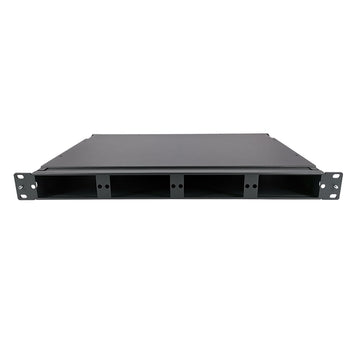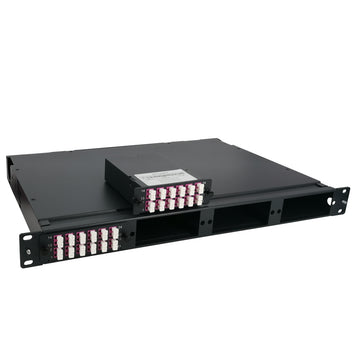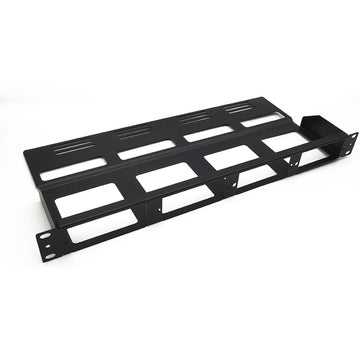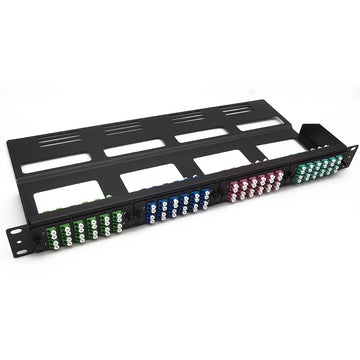Full coexistence of GPON, XGS-PON, and NG-PON2
Safe Migration to Next-Gen Optical Broadband Access
A gradual and controlled journey to XGS-PON and NG-PON2
PON (passive optical network) architectures are continuously evolving, further improving data rates and service availability. Several PON technologies are currently deployed, with GPON (gigabit PON) having the highest uptake rate. XG-PON1 (10-gigabit PON), the first standard 10 Gbps PON technology, drew the most attention in the early 2010’s, but newer generations, dubbed XGS-PON (10-gigabit symmetric PON) and NG-PON2 (next-generation PON), are taking centre stage at present.
The long menu of technologies and options both attracts and confuses the operators. However, the opportunities that these next-gen technologies promise keep the operators on their toes and ready to jump on the bandwagon as soon as component prices drop – and as soon as they are confident they can make a gradual, cost-efficient and controlled transition, without any disruption to the services they offer.
Learning from the Past
Undoubtedly a market leader, GPON supports downstream/upstream (DS/US) data rates of 2.5/1.25 Gbps,and split ratio from 1:16 to 1:128. Using additional wavelength multiplexers/triplexers, it optionally facilitates coexistence with RF (radio-frequency) video overlay of CATV (cable television), and/or with OTDR (optical time domain reflectometry) equipment.
Standardised in 2010, XG-PON1 was the first 10 Gbps PON technology, with DS/US data rates of 10/2.5 Gbps,and split ratio from 1:32 to 1:256. Despite its improved data rates, its adoption implied business risks due to low component maturity, while newer generations of PON (specifically, NG-PON2) were already anticipated. Today,XG-PON1 has been mostly displaced by XGS-PON.
NG-PON2 (standardised in 2015) employs WDM (wavelength division multiplexing) to create up to eight simultaneous,wavelength-separated instances of PON trees on the same ODN. Supported DS/US data rates are four (up to eight) times 10/10 Gbps (with service data rates up to 10/10 Gbps), while split ratio ranges from 1:16 to 1:256. To support new use cases (such as enterprise or mobile), NG-PON2 inherently supports both TWDM-PON (time- and wavelength-division multiplexing) with each wavelength shared among ONTs (optical network terminations) with TDM, and P2P WDM-PON for point-to-point connectivity using dedicated wavelengths per ONT.
XGS-PON (2016) combines high data rates of NG-PON2 with CAPEX efficiency of XG-PON1, and is often perceived as an intermediate step to NG-PON2. It supports symmetric DS/US data rates of up to 10/10 Gbps, and split ratio from 1:16 to 1:256. XGS-PON reuses either XG-PON1 or GPON wavelengths (via “basic” or “optional” wavelength sets, respectively), allowing complete reuse of existing passive infrastructure (ODN, splitters, shelters, etc.), and coexistence with previously employed PON technologies.

Full coexistence of GPON, XGS-PON, and NG-PON2
In order to coexist with GPON networks, a CE (coexistence element) is needed, replacing the legacy triplexer. Since the 40/80 Gbps NG-PON2 is introduced on top of existing GPON/XGS-PON network.The NG-PON2 wavelengths do not overlap with other PON technologies, so no wavelength conflicts occur. The CEx modules installed to support all the wavelengths, and additional elements are required: the wavelength multiplexers (WMs) is installed at the NG-PON2 OLT location. The WMs combine all different NG-PON2 wavelengths (up to eight in either direction) and the corresponding physical OLT ports. Introducing the WMs does not cause service disruption to customers previously connected to the ODN. At the same time, the WMs allow operators to maintain a gradual, pay-as-you-grow expansion of NG-PON2, following the needs and use cases.
Given that the most likely and cost-efficient approach is inserting new NG-PON2 blades into existing OLT shelves, new wavelengths can be assigned and combined as use cases dictate – from residential broadband and business connectivity to mobile backhaul and fronthaul. Furthermore, functional separation (in multi-provider environments) can be supported by utilising separate wavelengths per provider.
New customers’ NG-PON2 ONTs only need to be connected to the ODN, and can coexist with existing ONTs. In order to “tune” to individual wavelengths (up to eight of them), NG-PON2 ONTs use tunable transceivers, while a tuning mechanism on OLTs configures ONT wavelengths. The use of tunable ONT transceivers (with no specific wavelength defined in advance) reduces OPEX, and simplifies management of ONT inventory.
At the same time, the wavelength agility facilitates better bandwidth utilisation (by dynamically reassigning the wavelengths), improved service resiliency (by retuning to another wavelength in the event of a failure), and power saving (by retuning to a common wavelength during low-traffic periods).

How can LightOptics support your network evolution?
With OEM/ODM quality fiber optics and industry experts, LightOptics is your trusted partner for optics from the network backbone to the customer premises. LightOptics new range of Next Gen PON optics and coexistence elements offer Service Providers an unrivaled portfolio of options to ensure a fast and trouble free service deployment.













